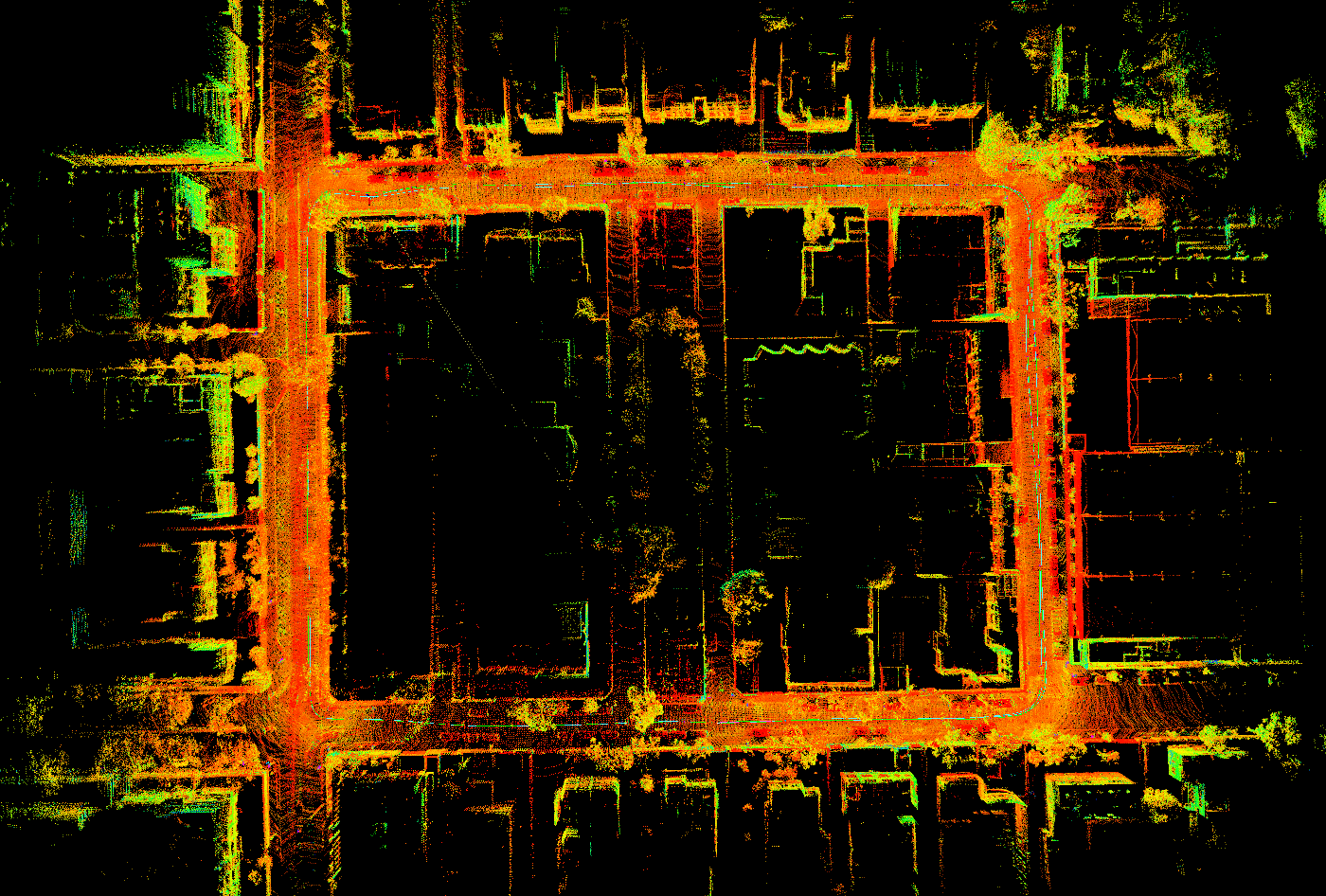LIO_SAM_6AXIS适配UrbanNav,并对比添加GPS约束和不加GPS约束的结果
roslaunch lio_sam_6axis run.launch
经过一段时间,加入GPS约束后,GPS轨迹和LIO轨迹基本对齐

This repo may help to adapt LIO_SAM for your own sensors! It has some changes comparing with the origin system.
- support a 6-axis IMU, since the orientation information of IMU is not used in state estimation module.
- support normal GNSS, we do not need to adapt for the robot_localization node.
- support the gps constraint visualization module to help debugging the normal GNSS.(the following picture)
- More accurate origin LLA point.
- Support KML file and we can see the trajectory in GoogleMaps.
- Add video tutorial
LIO_SAM is only designed for 9-axis IMU, for the following reasons.
- the initialization module need absolute orientation to initialize the LIO system.
- the back-end GNSS-based optimization relies on the robot_localization node, and also requires a 9-axis IMU.
Therefore, only minor changes to the original code are required. which can directly use GPS points of good quality for optimization. Finally, we also made some explanations for some common lidars, as well as coordinate system adaptation and extrinsics between lidars and IMUs, such as Hesai.
we add the gps constraint visualization module to help debugging the normal gps(red lines represents for gps constraint).
the same as LIO_SAM.
my previous and current system:
Ubuntu18.04 /PCL1.8/OpenCV4.5/GTSAM4.0.2
Ubuntu20.04/PCL1.10/OpenCV3.4.16/GTSAM4.1
Whether you are running the sample data provided by me or adapting your own sensor, you can watch the detailed teaching video below.
Video Tutorial:Bilibili、Youtube
when you set useGPS as true, remember to test the params gpsCovThreshold. Just make sure your vehicles are in a good position at the first beginning of the sequence where the status of GNSS is stable encough, or you can not initialize your system successfully!
Gps initialization video
roslaunch lio_sam_6axis run.launch
when you set the useGPS true, you may get the following los. It means that these gps points are used for optimization.
[ INFO] [1651092699.914940274]: curr gps cov: 11.022400, 11.022400 , 176.358400
[ INFO] [1651092700.516013418]: curr gps pose: 13.806815, 7.928380 , 5.147980
[ INFO] [1651092700.516037958]: curr gps cov: 11.022400, 11.022400 , 176.358400
[ INFO] [1651092700.516045476]: curr gps pose: 13.868968, 8.179937 , 4.978980
[ INFO] [1651092700.516052422]: curr gps cov: 11.022400, 11.022400 , 176.358400when you want to test on multi-sequence rosbag with the same set of sensor equipment. You just need to modify the script LIO-SAM-6AXIS/scripts/lio_loop_batch.py.
-
put all your rosbag info one folder , and set it as the
bag_path_downloadparams. set your rosbag file name(bag_path_list) -
set your sequence name (
plat_data_pair_list) -
source your workspace(
source devel/setup.zsh) -
run the script
python3 src/LIO-SAM-6AXIS/scripts/lio_loop_batch.pyI will give the map and related example results constructed based on the instance data using LIO_SAM_6AXIS, once the sharing function of Baidu netdisk is normal.
rosservice call /lio_sam_6axis/save_map-
campus_result.bag: inlcude 2 topics, the distorted point cloud and the optimzed odometry -
odom_tum.txt -
optimized_odom_kitti.txt -
optimized_odom_tum.txt -
pose_graph.g2o: the final pose graph g2o file -
globalmap_lidar.pcd: global map in lidar frame. -
globalmap_imu.pcd: global map in IMU body frame, but you need to set proper extrinsics. -
globalmap_lidar_feature.pcd: edge+planer points map, based on lidar frame. -
origin.txt: The origin of the point cloud map, which can be used for prior map-based localization. -
optimized_gps_trajectry.kml: KML file for optimized trajectory, you can show it in GoogleMaps.
See this doc.
Download the HILTI DATASET.
The config/params_pandar.yaml is prepared for the HILTI sensors kit, so you can run it direcly!
- colored point cloud map
- dynamic object removal
- Using GNSS Raw Observations
As soon as I have time I will continue to update this repo and release more data.
Thanks to Guoqing Zhang, Jianhao Jiao.
Thanks to LIO_SAM.








